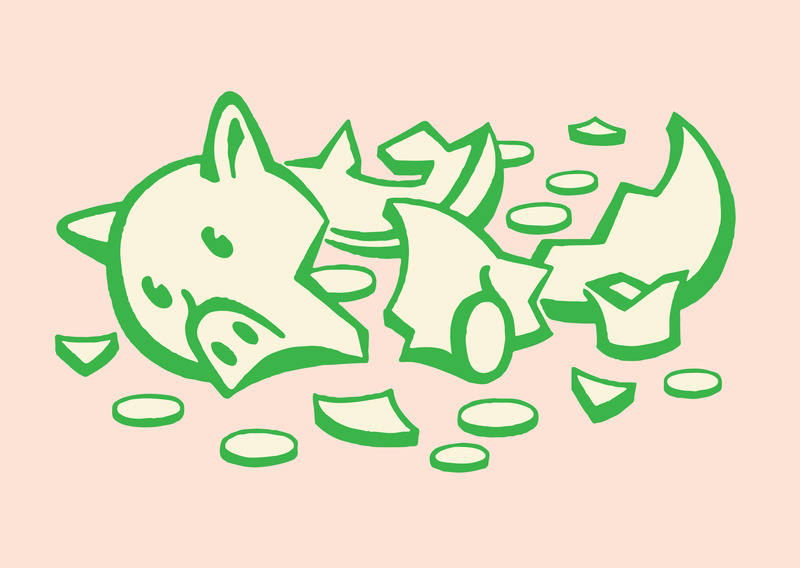According to
Educationdata.org, the dropout rate for undergraduate college students is 33%, with 24% qualifying as college freshmen who drop out before their sophomore year. Both are significant figures.
Students have a variety of
reasons for dropping out of college. Some leave college to work, while others believe that they cannot continue because of a lack of financial support. Whatever the case, dropping out of college is not simple – and it’s not cheap.
Why? Because students that drop out of college are
required to pay back any financial aid they have used to pay for their college education.
So before dropping out, think twice about how much it will cost.
How Will Dropping Out Affect Your Financial Aid?
Students can qualify for financial aid to pay for college by filling out the Free Application for Federal Student Aid – otherwise known as the
FAFSA. Through this application, the federal government determines what a family can pay for college (Expected Family Contribution, or EFC) in order to determine whether it’s necessary for the student to utilize financial aid dollars as well.
Once the student has applied to colleges, each institution will use the information gathered on the FAFSA to deliver a financial aid package. These packages can contain grants, scholarships, work study, and student loans.
Though colleges and the government will use terms like “awarded” financial aid dollars, the money is actually earned. Therefore, when a student drops out of college, they have to pay back a certain amount of their financial aid, which is determined by a refund-calculation formula.
Do You Have to Pay Back Financial Aid if You Drop Out?
Federal Grants and Financial Aid
Depending on when the student drops out of college, he or she must pay back 50% of a percentage of aid not used for classes. Sound confusing? Let us break it down with a little story problem.
John receives a $2,000 Pell Grant for the semester and uses $1,000 for tuition. He drops out a fourth of the way through the semester. Under the rule, John has only "earned" 25% of his grant. The college is required to return all of John's "unearned" aid that went toward tuition (75 percent, or $750).
John is personally required to pay back 50% of his unearned aid that didn't go toward tuition. Because he dropped out a fourth of the way through the semester, John earned $250 of his $1,000. Fifty percent of the remaining amount ($750) is $375, which is what John owes.
Student Loans
What happens to student loans if you withdraw from college?
Just like financial aid,
student loans must be paid back if a student drops out of college. Students will have a six-month grace period after dropping out during which no loan payments must be made; however, interest will accrue during this period and payments will begin promptly at the six-month mark.
Unlike financial aid, there are payment plans that students can take advantage of in order to pay for their student loans. Income-based repayment plans will take a certain percentage of income each month, and the balance of the loans will be forgiven after 20-25 years.
If a student is dropping out of college because they have a severe illness, like cancer, they can request a deferment or forbearance on their student loans. A deferment or forbearance allows students to pause their student loan payments for up to three years, giving them time to get themselves out of a really challenging period before having to make student loan payments. Interest will still accrue during this period, however.
Scholarships
Scholarships do not have to be paid back; therefore, students are encouraged to apply for scholarships to help them pay for school! In general, scholarships do not have to be paid back if you drop out of college.
However, each scholarship provider has its own rules and regulations. Some private scholarship providers have clauses that state a student must be enrolled full-time or complete their degree in a specific field. Other scholarship providers do not have such regulations in place if a scholarship winner decides they do not want to go to college anymore.
Colleges that offer merit scholarships may also have similar scholarship rules for students receiving an institutional scholarship. In some cases, if the reasons for dropping out or withdrawing are due to life-threatening illness or death, the student may not be responsible for paying back the merit scholarship earned from their college. Students that earned an institutional scholarship should contact the financial aid office at the university to get the payback or refund policies, if applicable.
The Financial Implications of Dropping Out of College
Before students drop out of college, it’s pivotal that they understand the financial implications of their decisions. Typically, a financial aid officer can walk students through how much they will have to repay if they choose to leave the school. The financial aid officer will also help them walk through student loan payment plans.
Additionally, the federal government provides an Exit Counseling session online at
studentaid.gov. This course discusses important information as it relates to student loan repayment.
If a student has loans through a private lender, they should call the lender to discuss their options when dropping out. It’s important to know how much money will have to be paid back and when payments will be billed.
It’s worth noting, too, that with student loans, an individual could be paying these back for years with no college degree to show for it. So, students must heavily weigh this decision; it will impact them for years to come.
What to Consider Before Dropping Out
Before you decide to drop out of college, consider the reasons why you feel this is the right step to take. Do not drop out just because
you have a challenging professor, semester, or course. Instead, use college resources like the office of student services or even TRIO to get the help you need.
Many colleges offer free resources that support students’ academic progress. You can also
consider withdrawing from a course if necessary.
Some students simply need to step away from college for a short time. This can be for a variety of reasons such as mental health, or to take advantage of an opportunity that doesn't work with your college schedule. The idea is that you take a break from college with the goal to resume your college career in a reasonable timeline.
A
Rasmussen University blog provides several reasons why a college student may want to consider taking a break. This includes military deployment, addressing and reforming dangerous habits, physical or mental health concerns, bereavement, or grieving.
When and How to Drop Out of College
If after talking with a student services professional, you still feel like you should drop out, you’ll need to schedule time to discuss your financial obligations with a financial aid counselor at your college. This will give you a clear picture of what you will be expected to pay back and the timing of these payments.
Students are also encouraged to finish a semester, rather than dropping out in the middle. The idea is that you get credit for all the hard work you have put in and will be able to use these credits later if and when you decide to resume your college education.

